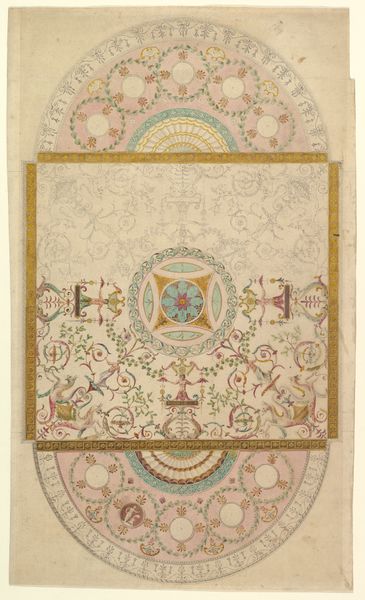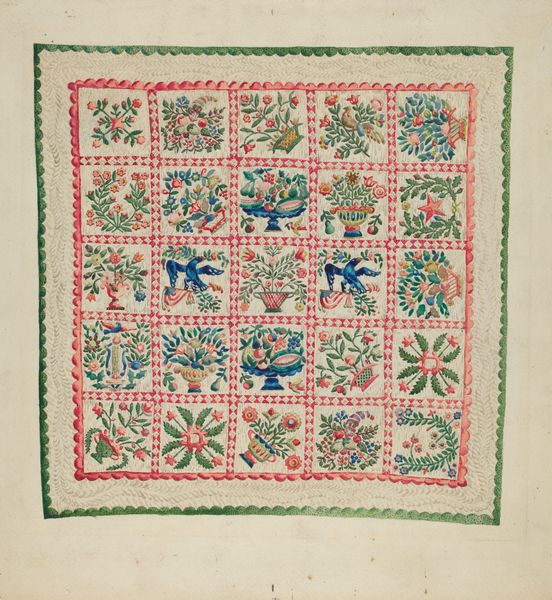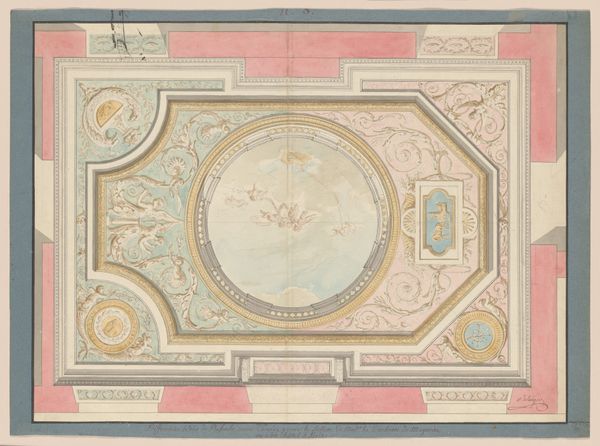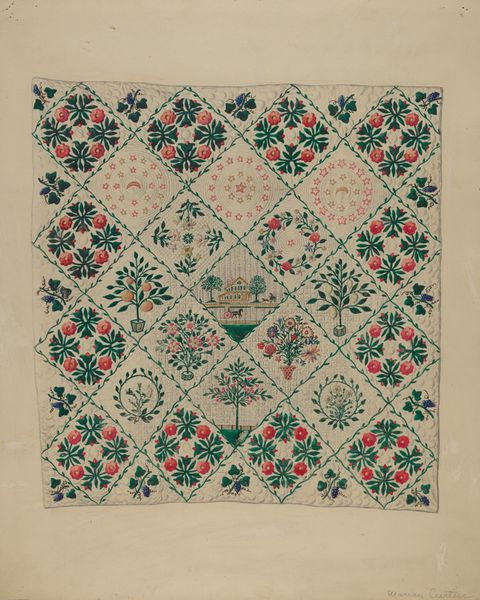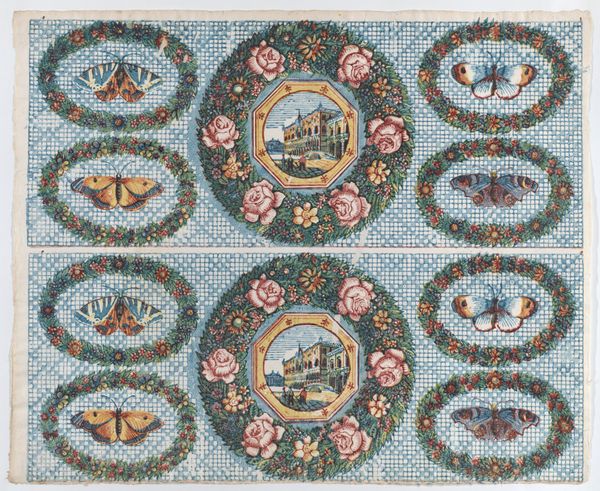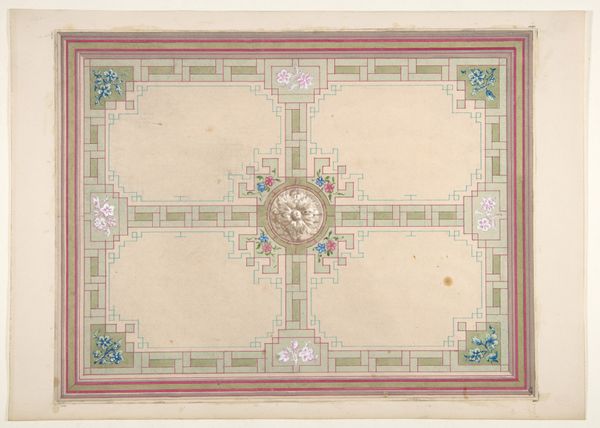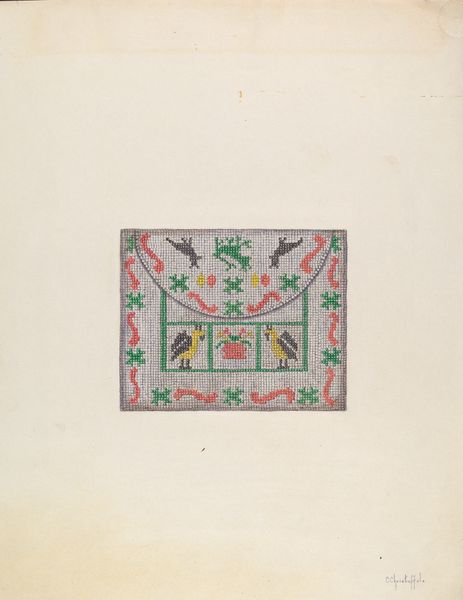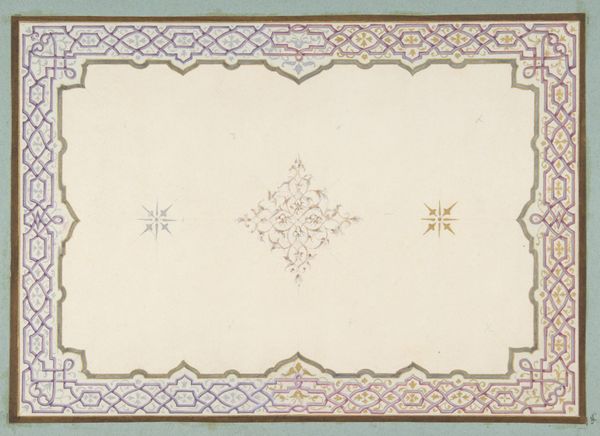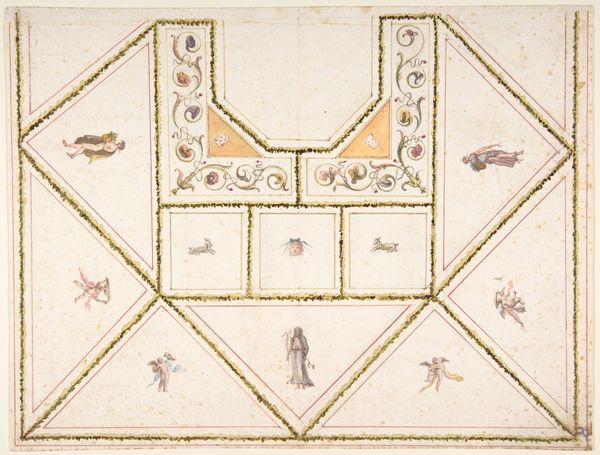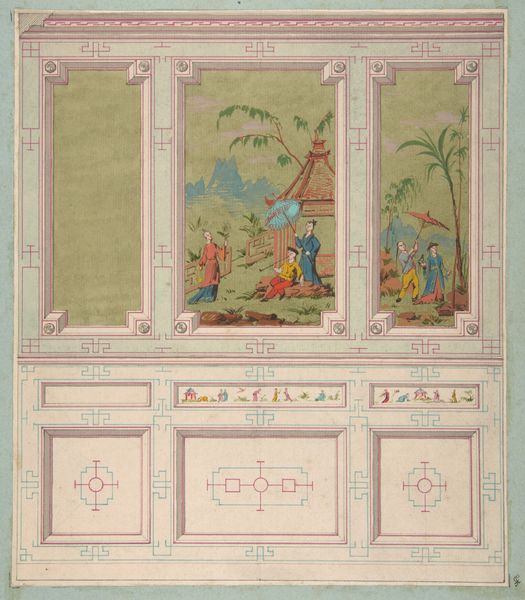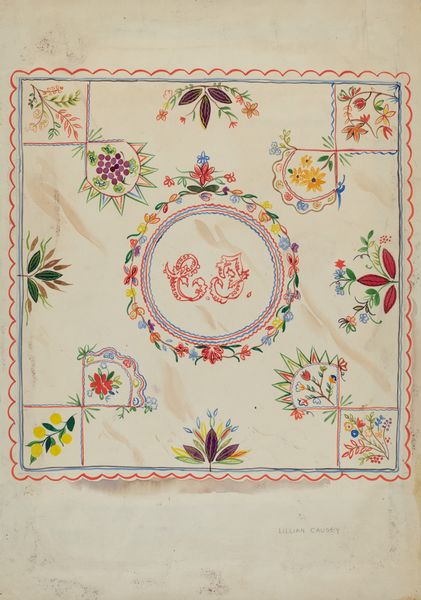
Design for the painted decoration of a baker's shop 1850 - 1900
0:00
0:00
drawing, print, plein-air, watercolor
#
drawing
# print
#
plein-air
#
watercolor
Dimensions: sheet: 3 1/8 x 7 3/16 in. (7.9 x 18.3 cm)
Copyright: Public Domain
Editor: This watercolor and print drawing from sometime between 1850 and 1900, entitled "Design for the painted decoration of a baker's shop," by Jules-Edmond-Charles Lachaise, has a surprisingly calming effect with its repetitive pattern. I'm curious, how do you interpret this design from a formalist perspective? Curator: Notice how the artist meticulously divides the space. A grid underlies the entire composition, creating distinct geometric compartments. Observe the interplay between the squares, diamonds, and circles. It is a study in the pure arrangement of shapes. What strikes you about the use of color here? Editor: I see a balance between pastel shades like the pink and green, contrasted with the brighter yellows, oranges, and blues in the center. I see the floral patterns or central imagery adds some nice variability, preventing it from being too predictable. Curator: Precisely. It is the artist manipulating these formal elements—line, color, shape, and composition—to establish harmony and visual interest. The natural motifs serve not as literal depictions of waterfowl and pheasants, but more like symbolic representations within this rigid, structured order. What about the artist's signature in the lower left? Editor: Ah, yes. It is a more loose handwriting compared to the symmetry in the image's decorations. It’s almost separate from the decoration itself. I wonder, does the grid perhaps create a deliberate tension with the painterly qualities? Curator: Precisely. And that is formalism at work; understanding the pure aesthetics. By emphasizing the relationships and arrangements in design itself, one discovers the value, instead of analyzing context. This has provided a renewed appreciation for pure arrangement of space and colors. Editor: Absolutely. I hadn’t considered the relationship between the image composition as the intent and meaning. Thanks!
Comments
No comments
Be the first to comment and join the conversation on the ultimate creative platform.

